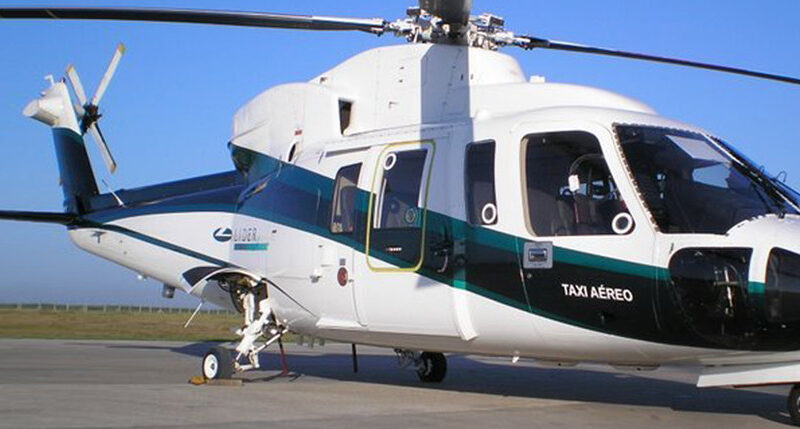HI Uplift: Brazil hopes for a stronger second half

Hopes for a stronger second half to the year for Brazil’s recovering helicopter industry, after a slow first half, characterised speakers’ views at Helicopter Investor’s latest Town Hall online meeting dedicated to rotary prospects in the country. But even with a second half (H2) revival, orders are unlikely to match the level reached in 2022.
Francisco Camoes, senior sales director at helicopter sales and market intelligence firm Aero Asset set the scene for Brazil’s rotary industry. “The Brazilian helicopter fleet is one of the largest in the world and certainly the largest fleet in Latin America due to the size of country and the agility the helicopter brings,” he told viewers. The country had the world’s fourth largest civil rotary fleet in 2019, according to German data analyst Statistica.
“Brazil has a fleet of more than 1,000 turbine helicopters in operation,” said Camoes. “Specifically in São Paulo, a helicopter lands every 45 seconds at one of the city’s helipads.” Brazil’s most populist city, São Paulo was one of the world’s first to have a dedicated air traffic control system for helicopters.
The nation’s two biggest helicopter markets serve offshore oil and gas facilities and fly VIP transport missions. Other civil operations include supporting the mining industry, firefighting and police operations.
It has been a difficult first half of the year for the Brazilian helicopter industry compared with strong sales last year, according to Valerie Pereira, vice president, Market Research, Aero Asset. As an indication of market performance, pre-owned helicopter sales plunged 70% in the first six months of this year compared with the same period of last year. “It seems a lot but take note; sales volumes in the past two years have been fuelled by firm OEM deliveries,” said Pereira. Also, pre-owned helicopter sales fell 3% in the last semester compared with the first semester.
Sluggish H1 sales contrast sharply with 2022. “Last year, the supply of singles increased by 50% year-on-year and light twins increased by 20% while medium twins decreased by 30%,” she said. So, what will happen to supply in the next six to 12 months? “The singles supply will start to level out sometime in the fourth quarter,” predicted Pereira. “I don’t foresee any drastic increase in transaction volumes until the end of the year.”
Looking further ahead, over the next two years, helicopter industry growth of between 20% to 30% was predicted by Junia Hermont, chief operating officer, Líder Aviação (Líder Aviation). That level of growth would return the Brazilian helicopter industry to the boom conditions of 2014, said Hermont. The industry now has 60 helicopters under contract but that’s half the number of the contracted fleet in 2014. “From 2006 to 2014, there was very large growth in the market and the oil and gas industry,” said Hermont. For example, state-owned Brazilian multinational corporation Petrobras had 120 helicopters under contract from different operators, she added.
But no immanent improvement is forecast. “The helicopter industry is still recovering from the pandemic and faces a number of challenges,” said Hermont. Those include frustrations in achieving parts and a shortage both of pilots and technicians. “You don’t form this workforce overnight. It’s a challenge for all companies that operate in this segment.”
Operating rotary and fixed wing assets, Líder Aviation specialises in air charter, aircraft sales and aircraft maintenance. The company, which has a workforce of 1,450, operates an owned fleet of 50 aircraft and is about to welcome an Airbus H145 helicopter.
The company’s rotary fleet includes wide range of helicopters including: S92s, S76s, Bell 212s, AW139s and from Airbus H135s and H145s. “We face complexity
because of the different models from different manufacturers,” said Hermont. “But we have a multidisciplinary, specialist team that gives us a guarantee of safety and reliability of operation.” (Pictured is a Sikorski S-76, courtesy of Líder Aviation).
Another cautiously optimistic assessment of Brazil’s helicopter industry was delivered by Guiseppe Mignoli, regional sales director, Leonardo Helicopters. “We believe 2022 was the year the pandemic ended,” Mignoli told the Town Hall audience. “It was a year of strong sales in all sectors, when we reverted to what was normal before the pandemic.
“More than 220 helicopters fly in the skies of Brazil. And most of these are twin-engined aircraft focused on the VIP segment, which is very important to Leonardo, along with the offshore sector,” he added. Leonardo was said to account for more than 40% of the twin-engine rotary aircraft in Brazil. Over 29 helicopters entered the Brazilian market last year and half of them – like the Leonardo AW139 – were deploying in the growing offshore market, said Mignoli.
The industry had witnessed a slow start, he acknowledged, as it grappled with a range of uncertainties. These included questions about market conditions following the election of the new president Lula da Silva, tax matters and currency exchange rates between the Brazilian real and the US dollar and the European euro.
“But we are seeing some contracts signed, as the market slowly warms up,” said Mignoli. “We have also noticed that the Brazilian real is remaining steady.” Improvements in Brazil’s VIP helicopter sector in the second semester showed particular promise, he added.
Helicopter Investor’s Town Hall online meeting – Helicopters in Brazil; the local perspective – took place on July 20th. The Town Hall, sponsored by Aero Asset was hosted by Camoes. You can watch the Town Hall – which took place in Portuguese, plus English subtitles – free of charge here. And to receive your Helicopter Investor Uplift newsletter, sign up here.






